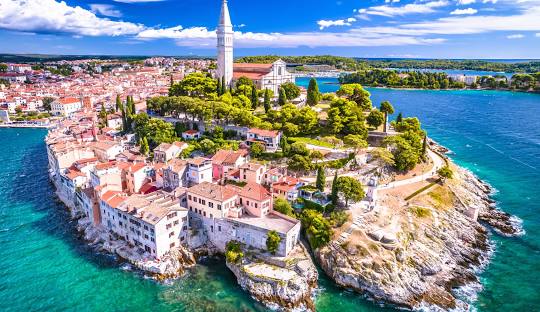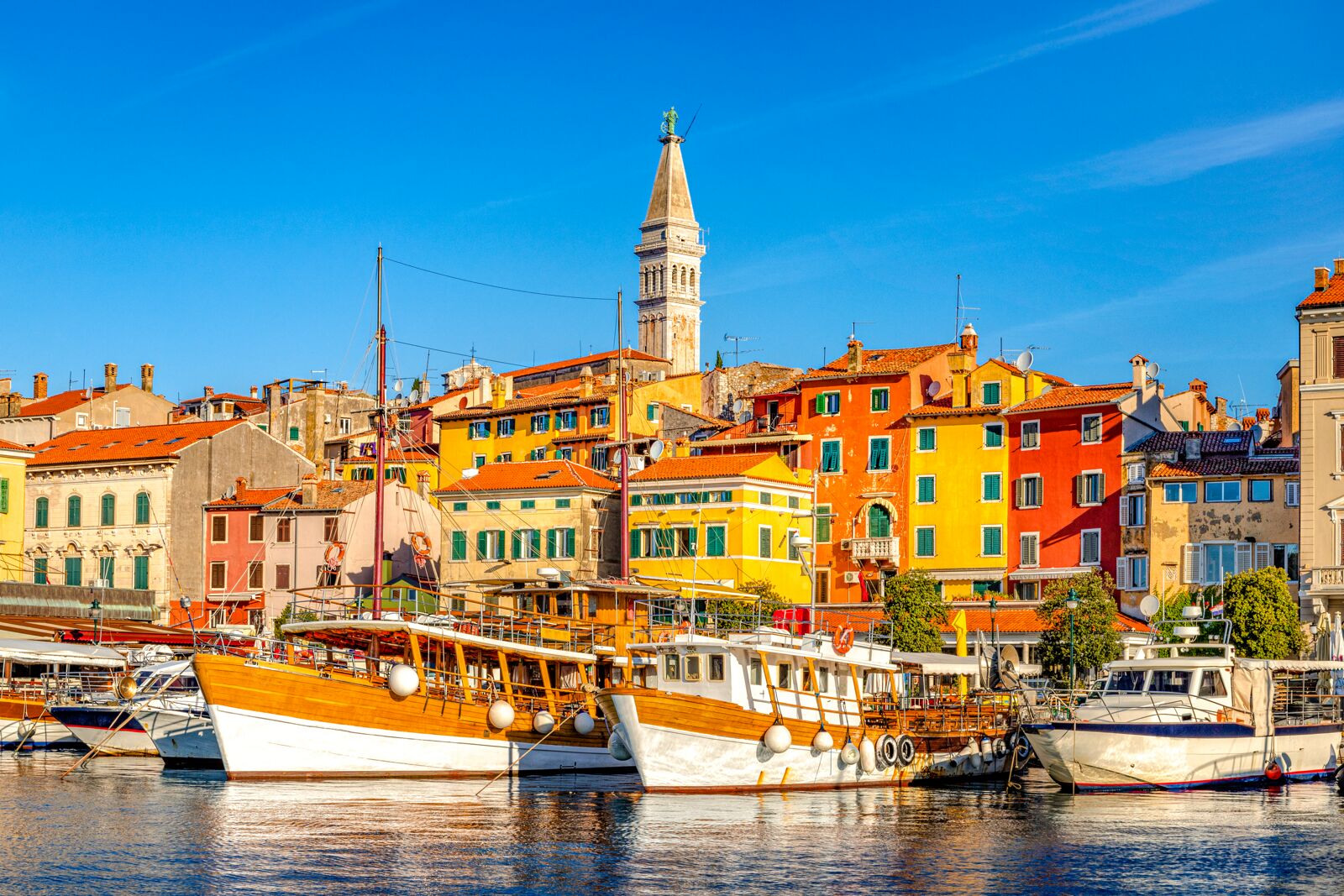



Rovinj is a Croatian fishing port on the west coast of the Istrian peninsula. The old town stands on a headland, with houses tightly crowded down to the seafront. A tangle of cobbled streets leads to the hilltop church of St. Euphemia, whose towering steeple dominates the skyline. South of the old town is Lone Bay, one of the area’s pebble beaches. The Rovinj archipelago’s 14 islands lie immediately off the mainland.
Late May to June / September:
Best weather + fewer crowds
Ideal for swimming, cycling, and exploring
July & August:
Peak season; vibrant but crowded
Great for festivals, nightlife, and full services
April & October:
Peaceful and scenic; mild weather
Good for walking, photography, and wine tours
Winter (Nov–March):
Quiet and charming, but many businesses close
Great for a peaceful retreat
Closest airport: Pula Airport (PUY) – ~40 km away
Flights from many European cities during summer
Shuttle or taxi to Rovinj (45 minutes)
Easily accessible by highway from Pula (40 min), Trieste (2 hrs), or Ljubljana (2.5 hrs)
Parking is mostly outside Old Town
Direct buses from Pula, Rijeka, and other Istrian towns
Long-distance buses from Zagreb and Ljubljana
From Venice (3–4 hours) by catamaran (companies: Venezia Lines, Adriatic Lines)
Cobbled alleyways, pastel houses, and art galleries
No cars — perfect for walking and exploring
Landmark baroque church with a panoramic bell tower (climb for amazing views)
Houses relics of Saint Euphemia, Rovinj’s patron saint
Rovinj’s art street: full of open-air galleries, artists, and handmade crafts
Colorful fishing boats, cafés, and views of the sea and islands
Best place for sunset photos
Coastal park with biking trails, picnic spots, and quiet coves for swimming
Flat trails lead through pine forests and vineyards
Bike rentals are widely available
Cruise the 14 Rovinj archipelago islands
Day trips to Red Island or Crveni Otok for beaches and snorkeling
Celebrates the traditional flat-bottomed fishing boat (batana)
Cultural heritage + boat rides available
Swim in rocky coves or jump into the clear Adriatic
Kayak or paddleboard around the Old Town
Sunset sailing tour with dolphin watching
Join a wine or truffle tasting tour in inland Istria
Photography walks in early morning light through the alleyways
Attend the Grisia Art Festival (August) or Rovinj Night (August)
Grand Park Hotel Rovinj – 5-star with infinity pool and marina views
Hotel Lone – sleek, modern, and surrounded by nature
Monte Mulini – boutique luxury with spa and beach access
Casa Garzotto – charming boutique hotel in the heart of the Old Town
Hotel Adriatic – stylish, art-themed hotel on the harbor
Guesthouse Residence Marco Polo – great value, Old Town location
Hostel Rovinj – affordable dorms and private rooms
Fresh seafood (especially sardines, sea bass, calamari)
Istrian truffles – black & white varieties
Fuži pasta with game meat or truffles
Olive oil and Istrian prosciutto
Malvazija (white) and Teran (red) wines
Monte – Rovinj’s Michelin-starred gem (modern Istrian tasting menus)
La Puntulina – cliffside dining with sea views
Torkolo – casual spot for fresh seafood and local wine
Balbi – local, friendly, and well-priced
Kantinon – harborside dining with a rustic feel.
Rovinj was once under Venetian rule — reflected in its architecture and dialect
Locals often speak Italian and Croatian; many signs are bilingual
Known for its artistic soul — painters, sculptors, and musicians fill the streets
Fishing heritage is still alive — fresh catches arrive daily at the harbor
People are friendly, proud, and relaxed — embrace the slow pace of life.